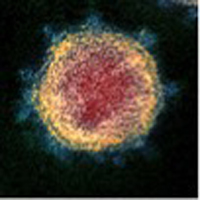Physical activity and medication in Brazilians suffering with non-communicable diseases in quarantine by COVID-19

Accepted: 14 April 2021
HTML: 3
All claims expressed in this article are solely those of the authors and do not necessarily represent those of their affiliated organizations, or those of the publisher, the editors and the reviewers. Any product that may be evaluated in this article or claim that may be made by its manufacturer is not guaranteed or endorsed by the publisher.
Authors
This study aimed to compare the practice of physical activity in groups of people with chronic diseases with and without medication, before and during the pandemic. 298 Brazilian individuals with chronic non-communicable diseases such as cardiovascular, metabolic / endocrine, respiratory, orthopedic, gastrointestinal diseases, anxiety and depression were separated into two groups: with and without medication. A questionnaire with 14 questions was applied, tracing the behavioral profile in relation to physical exercises before and during isolation, interpreted through descriptive analysis, and the groups were compared through Mann-Whitman’s statistics. The drop in the percentage of active individuals with or without medication occurred when comparing the scenarios before and during quarantine. However, the difference in the prevalence of active individuals between the groups was significant, showing that the group with medication remained more active. The fear of contamination, the measures of distance and the lack of adherence of the population to classes by videoconference reduced the frequency of physical activities in the general sample population. However, people who used medication showed greater concern about the practice of physical activity to optimize treatment. The isolation period had a negative impact on the practice of physical activity, regardless of the presence of some chronic disease or the use of medication.
How to Cite
PAGEPress has chosen to apply the Creative Commons Attribution NonCommercial 4.0 International License (CC BY-NC 4.0) to all manuscripts to be published.

 https://doi.org/10.4081/ejtm.2021.9772
https://doi.org/10.4081/ejtm.2021.9772



